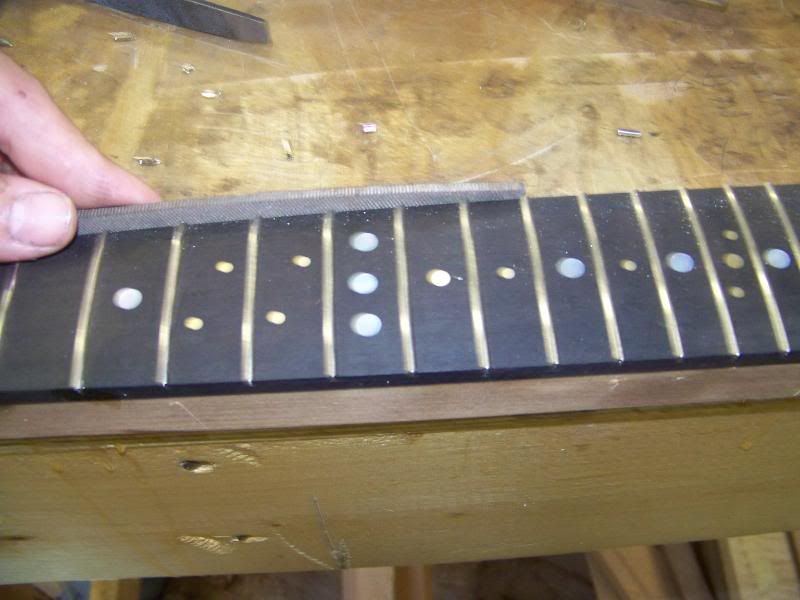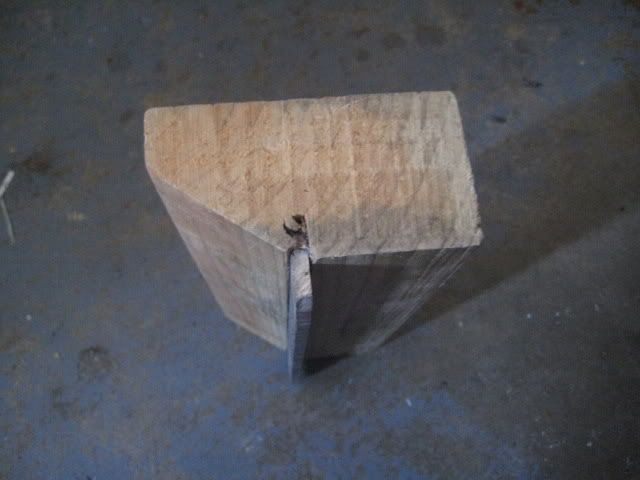(5 nouns in a row! English rules!)
I bought a little file from Stewmac to dress fret ends, but I didn't buy the block of wood with the angled slot to hold it, 'cuz, well, I HAVE a bunch of little blocks of wood, and I'd already spent 200 bucks on files (it's amazing how small a box can hold 200 bucks worth of Stewmac files :neutral .
.
I cut the slot at 45 degrees to the face of the block, but after I finished, it seemed that maybe it would bevel the frets too much, so I thought I'd ask the pros:
What's the proper angle for beveling fret ends?
I bought a little file from Stewmac to dress fret ends, but I didn't buy the block of wood with the angled slot to hold it, 'cuz, well, I HAVE a bunch of little blocks of wood, and I'd already spent 200 bucks on files (it's amazing how small a box can hold 200 bucks worth of Stewmac files :neutral
I cut the slot at 45 degrees to the face of the block, but after I finished, it seemed that maybe it would bevel the frets too much, so I thought I'd ask the pros:
What's the proper angle for beveling fret ends?







